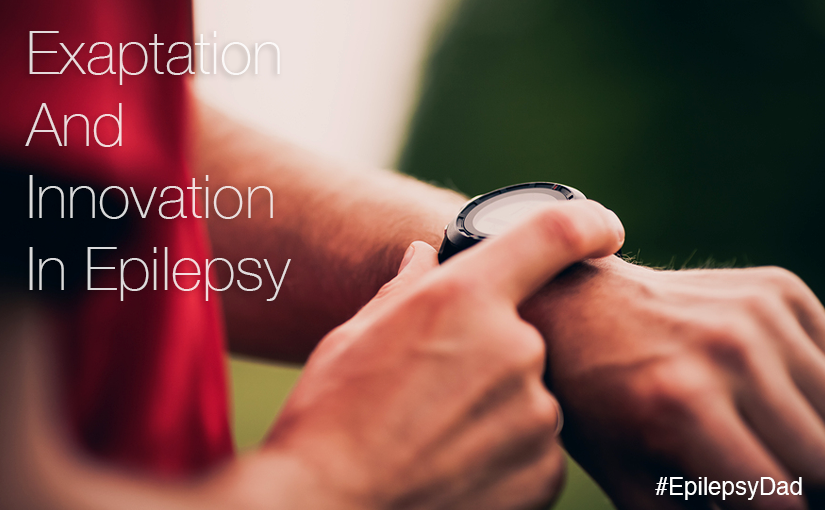This post is part of the Epilepsy Blog Relay™, which will run from March 1 through March 31. Follow along and add comments to posts that inspire you!
In evolution, the term exaptation refers to a trait that has evolved for one purpose but is subsequently used to serve another. The classic example is feathers, which evolved in birds as a way to regulate body temperature but were later adapted for flight.
The same process is happening in technology, including technology related to seizures and epilepsy. Already this week, other bloggers writing about technology and innovation in epilepsy have described exapting technology developed for one purpose for the treatment of epilepsy. Whether it is how Whitney Petit described how she uses her fitness wearable to control her nocturnal seizures or how a sensor to measure the “fight or flight” response became part of the Empatica device indented to detect seizures, advances in general areas of technology are also spurring progress in the managing and controlling of seizures.
I think a lot about technology. My day job is to identify trends in technology and peer into the future to try to predict where things will be in five years, ten years, or even further in to the future. I also think a lot about epilepsy. My six-year-old son has refractory epilepsy, which means it’s not controlled with medicine. Being a technologist and an engineer, my natural inclination is to turn to technology to help my son, even if it is not currently able to offer any answers.
There is one trend that I have been focused on most recently, and that is the development, availability, and shrinking size and cost of sensors. For example, companies are putting gyroscopes that measure angles and tilt and accelerometers that measure acceleration in wearable devices simply because they can, because the sensors are so small and so inexpensive. There are already components smaller than a watch battery that can detect movement and relay information to another device. Smart textiles provide digital fabric that will allow sensors to be stitched seamlessly in to clothing.
When I look in to the future, I see the ubiquitous nature of sensors in everything from watches and rings to shirts and shoes as manufacturers attempt to measure, collect, and report on our every step, breath, and literal heartbeat. I also see unlimited potential to repurpose these objects in ways that will make my son’s life better by helping him manage his epilepsy. The ultimate goal is to remove the friction imposed by requiring a specific device to be worn for the detection of seizures and to, instead, put that capability everywhere.
There are challenges with making this happen. Manufacturers must open their platforms and allow communities to leverage the data or sometimes reprogram devices for new tasks, such as detecting seizures. Testing for medical devices is rigorous, necessary, and expensive. But, in many ways, the ground work will be done. The sensors and devices necessary to do the work will be out there already, and we will just need to find creative ways to take advantage of them.
And that is where you come in. Even if you are not a technologist or an engineer, you are reading this post, most likely, because you or someone you know has epilepsy. In order to make the future happen, it will be up to people like you to create it. The next time you pick up a new gadget, ask yourself how it can be repurposed to solve a different problem. Instead of detecting how many steps you are taking, observe the physical characteristics of your child’s seizures and ask yourself how the accelerometer in that device might be able to detect a myoclonic seizure or a fall. The next time you read about how a new athletic top can measure the performance of an athlete, think about how those same measurements might be able to detect the increased heart rate or breathing rate that happens during a seizure.
I think a lot about technology, and I want you to think a lot about technology, too. Because there is no one better equipped to find creative uses for this new technology in the treatment of epilepsy than those of you that are living it every day.
NEXT UP: Be sure to check out Jade Dolby – The Art of Living with Epilepsy for more on Epilepsy Awareness.

Love the post! You are so right, it ultimately comes down to the patient questioning “how could this benefit someone with my condition?” The world of technology is forever changing. Making things more mobile which is causing the health care system to get us out of the doctors office even faster. We have to be more proactive even if that means finding more solutions to keep up with the mobile technology to bring it home. Early detection is always the goal until there is a cure. Your son has an awesome advocate in his corner 🙂
Thanks for the comment, Whitney, and thanks for sharing your inspirational story and post, too!